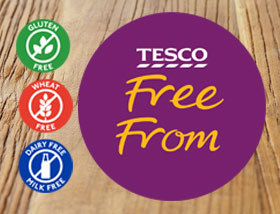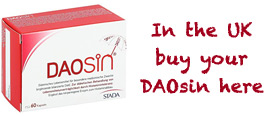|
|
FODMAPS and the low-FODMAP diet – Miranda Lomer, consultant dietitian at Guy’s and St Thomas’ Hospital. Part of the annual Nutrition and Health Live event. |
Miranda Lomer, consultant dietitian at Guy’s and St Thomas’ Hospital, spoke on FODMAPs and the low FODMAP diet – as devised by the Australian team of Professor Peter Gibson and dietitan Dr Sue Shepherd – for IBS and other conditions. FODMAPs are short-chain fermentable carbohydrates and the name is an acronym incorporating several classes of sugars: Fermentable Generally, they are not very well digested in the gut. As they pass through the small intestine, they draw water into the bowel, and then as they pass further into the large intestine, they are fermented by gut bacteria, leading to gas production. This excess gas and fluid can, in susceptible individuals, cause predictable symptoms of wind, diarrhoea and bloating. Oligosaccharides Lactose Fructose The main sources are honey and fruit – especially fruit juices and mango – but fruits with equal quantities of glucose and fructose are often well tolerated, as these can be absorbed together. Polyols The diet works by drastically reducing gas production and fluid in the bowel, and has been shown to be effective in between two-thirds and three-quarters of IBS patients who adhere strictly to it. The diet is challenging, though, and dietitians must work closely with patients in order to teach them the complexities of the diet. Processed foods in the UK are often rich in onion and garlic and high in FODMAPs, so these must often be avoided. Curiously, spelt bread is lower in FODMAPs than wheat bread, and may account for anecdotally reported tolerance of spelt bread in some patients. Curiously, this is not repeated with spelt pasta, which appears to be just as FODMAP-rich as durum wheat pasta (researchers do not know why). But spelt bread, rather than wheat-free or gluten-free bread, may be a good alternative to those for whom gluten-related disorders have been ruled out. Resistant starch, said Lomer, as a long-chain fermentable carbohydrate, doesn’t fall into the FODMAP grouping. There is some evidence that a high intake of resistant starch can increase abdominal symptoms, but because the low-FODMAP diet works so well as is, it’s not usually worth excluding resistant starch too – though is an option if it fails. (Resistant starch is found in cold potatoes, cold grains and beans, and under-ripe bananas.) There are, though, a few down sides to the low-FODMAP diet: generally, calcium intake is lowered considerably, and it seems the diet reduced beneficial bifidobacteria colonies in the gut – though it is not known whether this is a long-term effect. The low-FODMAP diet might have applications beyond IBS, in that it can reduce output in patients with stomas and relieve gut symptoms in IBD patients in remission.
November 2013 |












